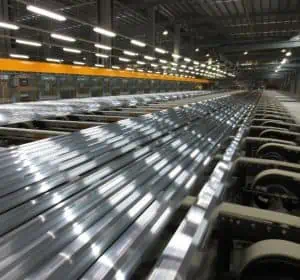What Is Clear Grade Wood Fencing?
Wood fencing can be a great addition to your yard. The material you use can be a major factor in the longevity of your fence. You’ll want to choose a material that is suited to your local climate. Your budget should also be a factor. If you’re on a tight budget, you’ll have to decide whether you’d prefer a low-cost wood option or a premium, durable wood.
(Looking for metal fencing installer? Contact us today!)

Cedar and redwood are two of the most popular types of wood for fencing. These two trees are durable and offer beautiful colors. However, these trees have a common weakness: they’re susceptible to rot. Insect damage and warping can also be a problem. Fortunately, you can treat your fence to prevent these problems.
Redwood is the most durable of the three, and it can take a variety of finishes. It can be color-treated to mimic the look of other wood varieties. A water-repellant stain can also help prolong the life of your fence.
Cypress is a type of wood native to the southern U.S. It’s dense and natural bug repellent, making it a good choice for a fence. While it’s more expensive than other options, it’s also less susceptible to rot. For this reason, it’s often used for prefabricated fence sections.
Fir, Pine and Hemlock are also commonly used in wood fencing. Each of these types has its own strengths and weaknesses, and you’ll have to choose based on the area where you live. Those in areas with frequent rain and snow will need wood that’s able to withstand drifts.
Another option for a wooden fence is pressure-treated wood. This kind of wood is treated with chromated copper arsenate, or CCA. This chemical is a pesticide that helps protect the wood from insect damage. However, it is also vulnerable to termites. Many composite fences also come with warranties. So it’s important to check with the manufacturer before applying any coatings.
When it comes to choosing a wood for your fence, the best way to go is to start by selecting the grade. A board that has no knots is considered clear grade. Choosing the wrong grade can lead to a fence that’s prone to rot. On the other hand, choosing a well-spaced knotted board can give your fence the appearance you want.
Other types of wood have more imperfections. Some, such as pine and spruce, are more affordable and can be used for short-term fencing. Others, like redwood and Douglas fir, are more expensive. However, they are generally considered better choices for long-term fencing.
Whether you’re planning to use the materials for a short-term or a permanent fence, your final selection will depend on the aesthetics of your yard. Regardless, you’ll have to be prepared for a lot of work, including sanding, staining, and sealing. Be sure to use a stain that’s semi-transparent so it won’t show through. Choosing the right type of cedar can make a huge difference in the quality of your fence.

